Bioluminescent Forest glimmers with projection-mapped light
Photographer Tarek Mawad and animator Friedrich van Schoor have used projection mapping to create a dream-like forest where trees and mushrooms glow and twinkle (+ movie).
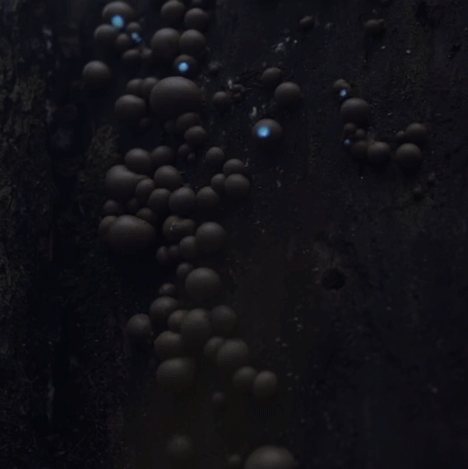
The German duo produced a film as the culmination of an eight-week project named Bioluminescent Forest. In the film, night falls upon the foggy forest and its flora and fauna begin to illuminate.
The leaves of trees appear alight, spiders' webs sparkle like glitter and mushroom tops seem to turn into bubbles.
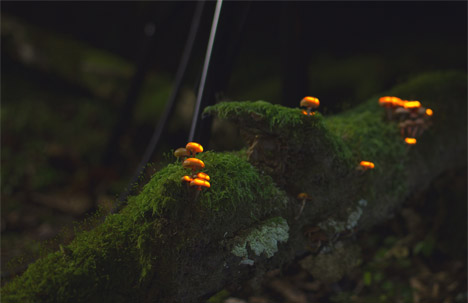
"A forest with glowing plants, mushrooms and trees is where we've wanted to live since we were little children. We wanted to make this dream come true," Tarek Mawad told Dezeen.

Mawad and van Schoor worked to replicate the bioluminescent qualities of animals like jellyfish and fireflies, which generate their own light using chemical reactions, using a lighting technique called projection mapping – also known as spatial augmented reality.
This involves using software to create animated video projections that are programmed to cast moving images of light across irregular surfaces.
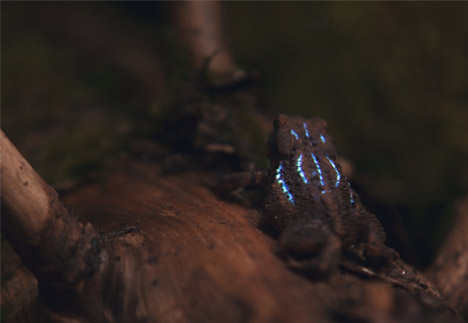
"What inspired us most was the phenomenon bioluminescence, which is mostly found in the deep-sea," said Mawad. "We wanted to recreate this effect that is seen on animals and bring it into the forest."
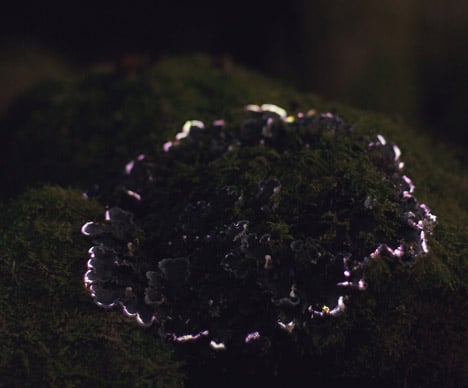
The pair spent six weeks camping in the forest in Pirmasens, Germany, to create the film. They used eight different locations, staying for around five days at each.
All the effects were created live, without any intervention or post-production.
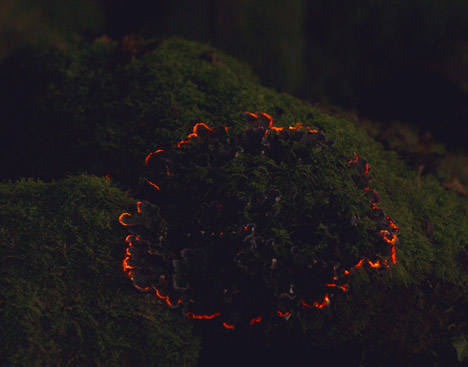
"As nature is growing and constantly changing we had to work fast. That meant spending about four to five hours on creating each projection and filming it," he explained.
"When we stared filming it was a season when mushrooms were growing and we projected onto different types. We were wondering why the projected footage was looking blurry. The reason for that was that the mushrooms absorb light, so it looked like they were creating the effect by themselves. That was perfect for our purpose and made it look very realistic."
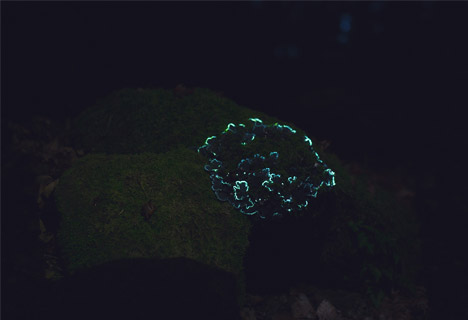
The first stage of the process was to find an interesting shape like an insect or tree trunk. Mawad and van Schoor then had to build a structure, using wooden pallets, tables and other pieces of wood, to support a projector and other equipment in order to hold them as still as possible.
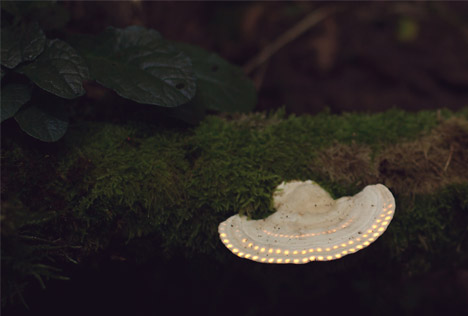
"With projection mapping one needs the equipment to be fixed and stable in one spot. With mossy ground under our feet, even placing a camping chair became a problem," said Mawad. "It took literally three times longer than in a comfortable working environment."
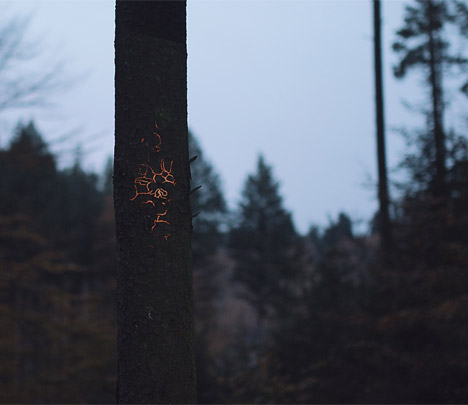
A "mask" then had to be drawn over the designated surface to mark the area where light would fall and where no light would be visible.
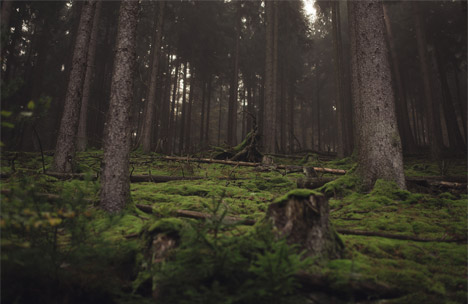
"In the 'making of' film you can see a short scene where I'm pointing to the moss dots and showing where to place the projection. This gives you an impression of the time-consuming process," said Mawad. "Masking all the dots took us about four hours, but it was worth it."
Composer and sound designer Achrim Treu worked to pair different sounds with different lighting effects to further personify them.
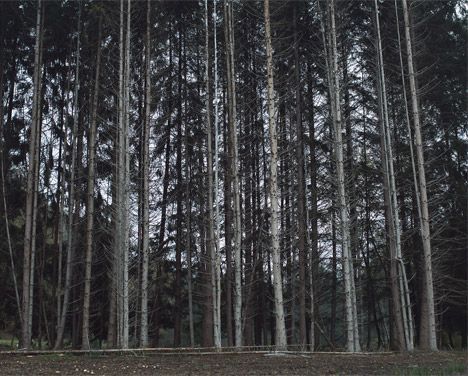
Mawad and van Schoor are considering the creation of an exhibition of the Bioluminescent Forest project as well as working on a new concept using the same technology.
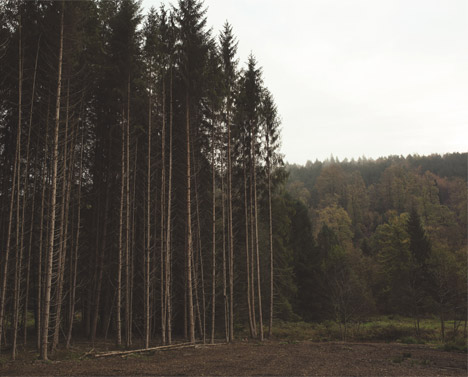
Projection mapping is most commonly used on flatter surfaces like the sides of buildings. For example, technology company Microsoft combined projection mapping with motion sensors to turn enclosed spaces into immersive augmented experiences.